Woven Or Non Woven Landscape Fabric

Table of Contents
Woven vs. Non-Woven Landscape Fabric: Which is Right for Your Garden?
Choosing the right landscape fabric can significantly impact the success of your gardening projects. This comprehensive guide explores the key differences between woven and non-woven landscape fabrics, helping you make an informed decision based on your specific needs and budget. We'll cover durability, weed control effectiveness, cost, and environmental impact to ensure you select the perfect fabric for your garden.
Understanding Landscape Fabric: The Basics
Landscape fabric, also known as weed barrier fabric, is a permeable material used to suppress weed growth while allowing water and air to reach plant roots. It's a crucial tool for maintaining healthy and weed-free gardens, flowerbeds, and landscaping projects. Two main types dominate the market: woven and non-woven. Each offers distinct advantages and disadvantages.
Woven Landscape Fabric: Strength and Durability
Woven landscape fabrics are created by interlacing fibers, resulting in a strong, durable material. Think of it like a tightly woven cloth. This construction provides several benefits:
Advantages of Woven Landscape Fabric:
- Exceptional Durability: Woven fabrics are highly resistant to tearing and punctures, making them ideal for areas with heavy foot traffic or where robust weed control is needed.
- Longer Lifespan: Their robust construction translates to a longer lifespan compared to non-woven alternatives. You can expect several years of effective weed suppression.
- Stronger Weed Barrier: The tight weave prevents even the most persistent weeds from penetrating.
Disadvantages of Woven Landscape Fabric:
- Higher Cost: Woven fabrics generally command a higher price than non-woven options.
- Less Permeable: While still permeable, the tighter weave can sometimes restrict water and air flow more than non-woven fabrics, potentially impacting plant health if not properly installed.
- Heavier and Less Flexible: This can make installation more challenging, especially on uneven terrain.
Non-Woven Landscape Fabric: Affordability and Permeability
Non-woven landscape fabrics are made from fibers that are thermally bonded or chemically treated, creating a sheet-like material. This method results in a more flexible and permeable fabric.
Advantages of Non-Woven Landscape Fabric:
- Lower Cost: Non-woven fabrics are significantly more affordable than woven options.
- Greater Permeability: Their structure allows for better water and air penetration, promoting healthier plant growth.
- Lightweight and Easy to Install: This makes them a convenient choice for large areas or intricate landscaping designs.
Disadvantages of Non-Woven Landscape Fabric:
- Shorter Lifespan: Non-woven fabrics are generally less durable and prone to tearing, requiring more frequent replacement.
- Less Effective Weed Barrier: The less dense structure allows some smaller weeds to penetrate more easily.
- Susceptible to UV Degradation: Prolonged exposure to sunlight can weaken the fabric over time.
Choosing the Right Fabric: A Decision Matrix
The best landscape fabric depends on your specific needs. Consider the following factors:
| Feature | Woven Fabric | Non-Woven Fabric |
|---|---|---|
| Durability | High | Low |
| Cost | High | Low |
| Permeability | Moderate | High |
| Weed Control | Excellent | Good, but less effective for aggressive weeds |
| Lifespan | Long (several years) | Shorter (1-3 years) |
| Installation | More challenging | Easier |
Environmental Considerations
Both woven and non-woven fabrics have environmental implications. Consider the fabric's lifespan and recyclability. While some fabrics are biodegradable, others are not. Research environmentally friendly options if sustainability is a priority.
Optimizing Your Landscape Project: Installation Tips
Regardless of your fabric choice, proper installation is crucial for effective weed control. Ensure the fabric is laid smoothly, overlapping edges, and secured with landscape pins or staples. Adding a layer of mulch on top helps further suppress weeds and retain moisture.
Conclusion: Making the Informed Choice
Selecting between woven and non-woven landscape fabric is a matter of balancing durability, cost, and ease of installation. For high-traffic areas requiring long-term weed control, woven fabric is the superior choice. However, for budget-conscious projects or areas with less demanding weed pressure, non-woven fabric offers a practical and affordable alternative. By understanding the strengths and weaknesses of each type, you can confidently choose the best landscape fabric for your garden's success.

Thank you for visiting our website wich cover about Woven Or Non Woven Landscape Fabric. We hope the information provided has been useful to you. Feel free to contact us if you have any questions or need further assistance. See you next time and dont miss to bookmark.
Featured Posts
-
Paddy Mayne In Sas Rogue Heroes Season 2
Jan 02, 2025
-
Bathroom Vanities 44 Inches Wide
Jan 02, 2025
-
Darts Bunting Through To World Champs Semi Final
Jan 02, 2025
-
220 Volts Ceiling Fans
Jan 02, 2025
-
Sunbrella Outdoor Furniture Set
Jan 02, 2025